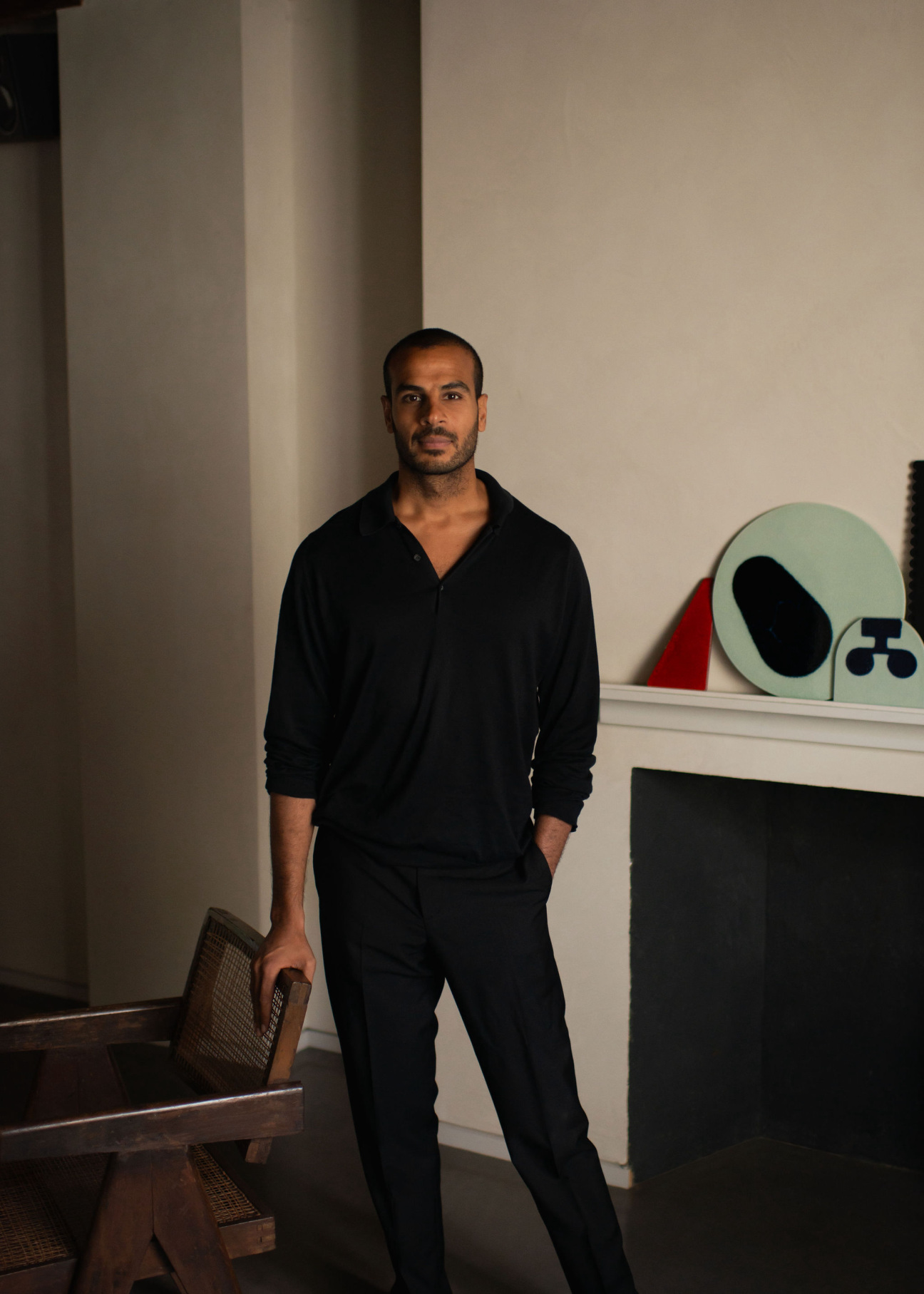
For London collector Rajan Bijlani, the patina or imperfect surface of a design piece is half the joy of an acquisition. "It's akin to storytelling," he remarks. "Each work is imbued with the life force of the activity for which it was made and used."
A visit to Chandigarh 20 years ago catalyzed Bijlani's decades-long quest to track down furniture from the Indian city, designed by modernist architect Le Corbusier. He's since acquired around 500 pieces, including works from Le Corbusier and his cousin, Pierre Jeanneret. The furniture—primarily teak and rosewood—provides a rich complement to the abstract works that line his walls.
Now, visitors are welcome to visit Bijlani's design-lined home with the opening of “Syncretic Voices,” an exhibition featuring work from six artists and designers, on view through Nov. 1. The show is set in his historic townhouse, Fonthill Pottery, which was the former residence and workplace of famed British ceramist Emmanuel Cooper. Below, Bijlani reveals the origins of his expansive trove, his top advice for new collectors, and his recs for the month's (other) must-see shows.
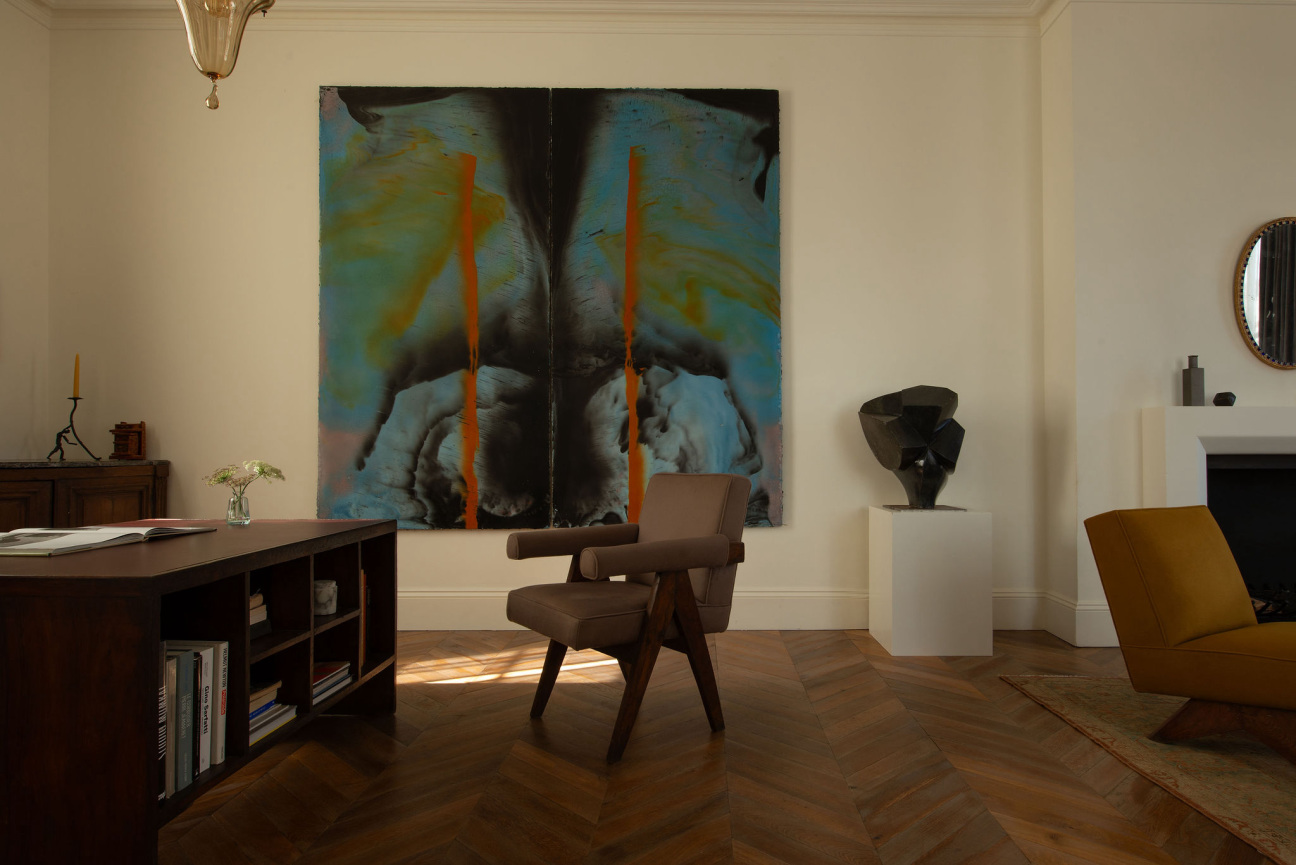
Where does the story of your personal collection begin?
All the creative energy and cultural diversity of the city I grew up in, London, set the table for my awareness and lifelong interest in collecting. My specific collection began 20 years ago when I went on an adventure to Chandigarh. I was fascinated by the architecture and city plan conceived by Le Corbusier. I was struck by both the beauty and function of the original furniture designed by Pierre Jeanneret and its dark and rich patina against the backdrop of the stark concrete buildings. I began collecting original pieces to preserve the design legacy and to use in my home.
What throughlines do you find in your collection? Do you think differently about acquiring pieces of design or art?
I am attracted to works of art and design that are elemental, simple and contemplative, with a reverence for history. I find the surface and patina of vintage furniture akin to storytelling, with each work imbued with the life force of the activity for which it was made and used. There is an idea of understanding furniture in its historical context and within the context of the present. A dialogue can then happen between history and with contemporary art, for instance, where expression with paint can echo the expressive patina and rich surface of modern design.
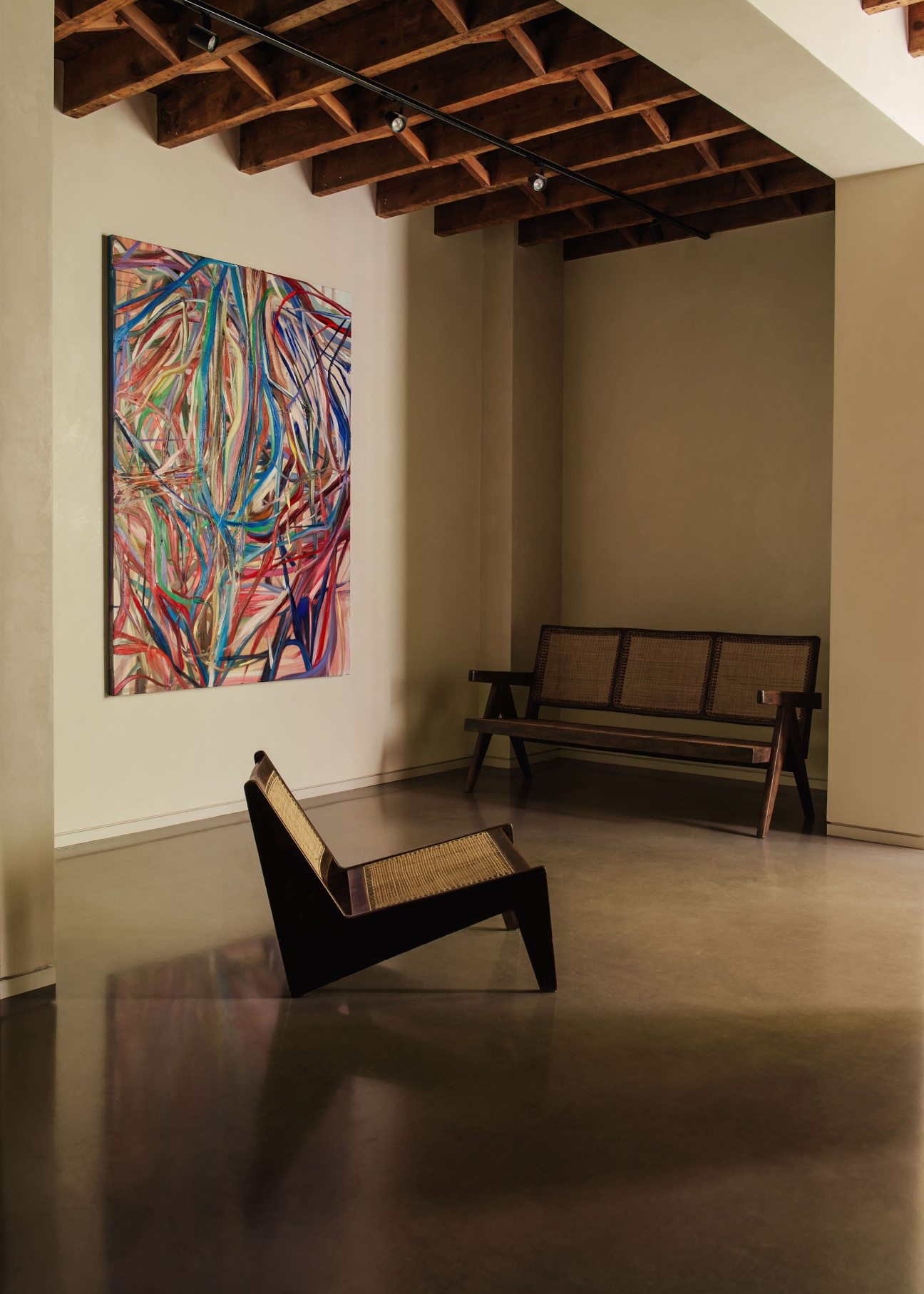
Which work in your home provokes the most conversation from visitors?
There is one work in particular that is the north star for my collection: a modestly scaled coffee table that has a heavily patinated, zinc-plated top. This work is rare because of the application of metal to the top. The zinc, which is pliable, has taken on a robust patina, and a loss to the center which I repaired. The repair aligns with the impromptu repairs found on the earliest and most original designs from Chandigarh as they wore over time.
The surfaces, worn paint and overall richness of the object, are what I measure every other work in my collection against. In contrast to this table, so many people come to the house and enjoy the rich alpaca and wool by Loro Piana Interiors on my Le Corbusier sofa. I mention this as an illustration of the two poles within the collection: history and luxury, which ultimately gives me great pleasure in living with the works.
How do you discover new artists or work?
My friendships and personal relationships with artists and dealers have been a wellspring of inspiration in discovering new artists. A long friendship with Michael Jefferson, a collector and former senior specialist at Christie's, introduced me to the work of Miyoko Ito, an obscure artist who lived in Chicago and died in 1983. I now own an important work by her, and it has changed my view on what painting can be, in terms of what I wish to live with.
Truls Blaasmo, an art advisor, is another dear friend, who has great connections in the art and fashion world. His influence has been quite strong in terms of artists to be aware of. Finally, books and social media have become important tools in discovering artists, leading to lasting relationships with their art.
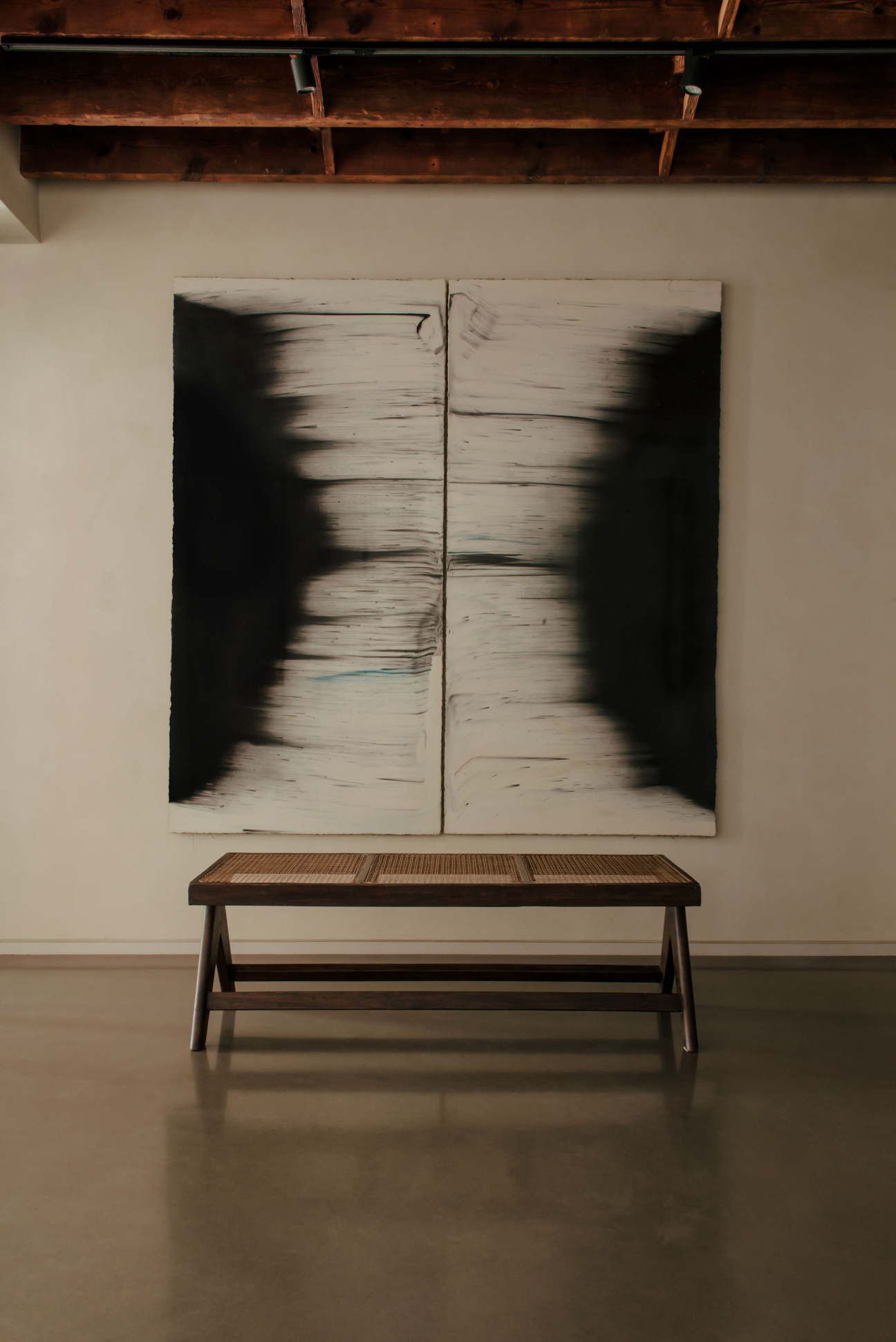
Which artist are you currently most excited about and why?
Harminder Judge and Vipeksha Gupta are a focus for me right now. Harminder's work is process-driven and expressive. He takes cues from Abstract Expressionist precedents and Indian neo-tantric painting. I've been fortunate to live with two exceptional works in the current exhibition at my house, "Syncretic Voices." I love how the work changes during different times of the day and subtle nuances reveal themselves. Additionally, Gupta's quiet abstractions have filled my space with a deep sense of calm. Her meditative process and absorbing color have inspired me.
What was your biggest influence in fostering your passion for art?
Simply put, the basis of my curiosity stems from the city of Chandigarh—a synthesis and integration of art, architecture, geometry and design. Le Corbusier and Jeanneret created murals, tapestries, decorative enamelled surfaces and lighting to accompany the brutalist architecture.
I never formally studied the arts, but my close friend and collaborator in design on my real estate development projects, Rebecca Sicardi, has been a strong influence on the nurturing of my inherent aesthetic instincts. The further I pursue collecting art and design, the more I am intersecting with artists, gallerists and exhibitions that influence my passion for all art. For example, working with James and Christie Brown on a recent exhibition at Blue Mountain School was an informative and enriching experience. These personal relationships really drive my knowledge and further deepen my interest in art.
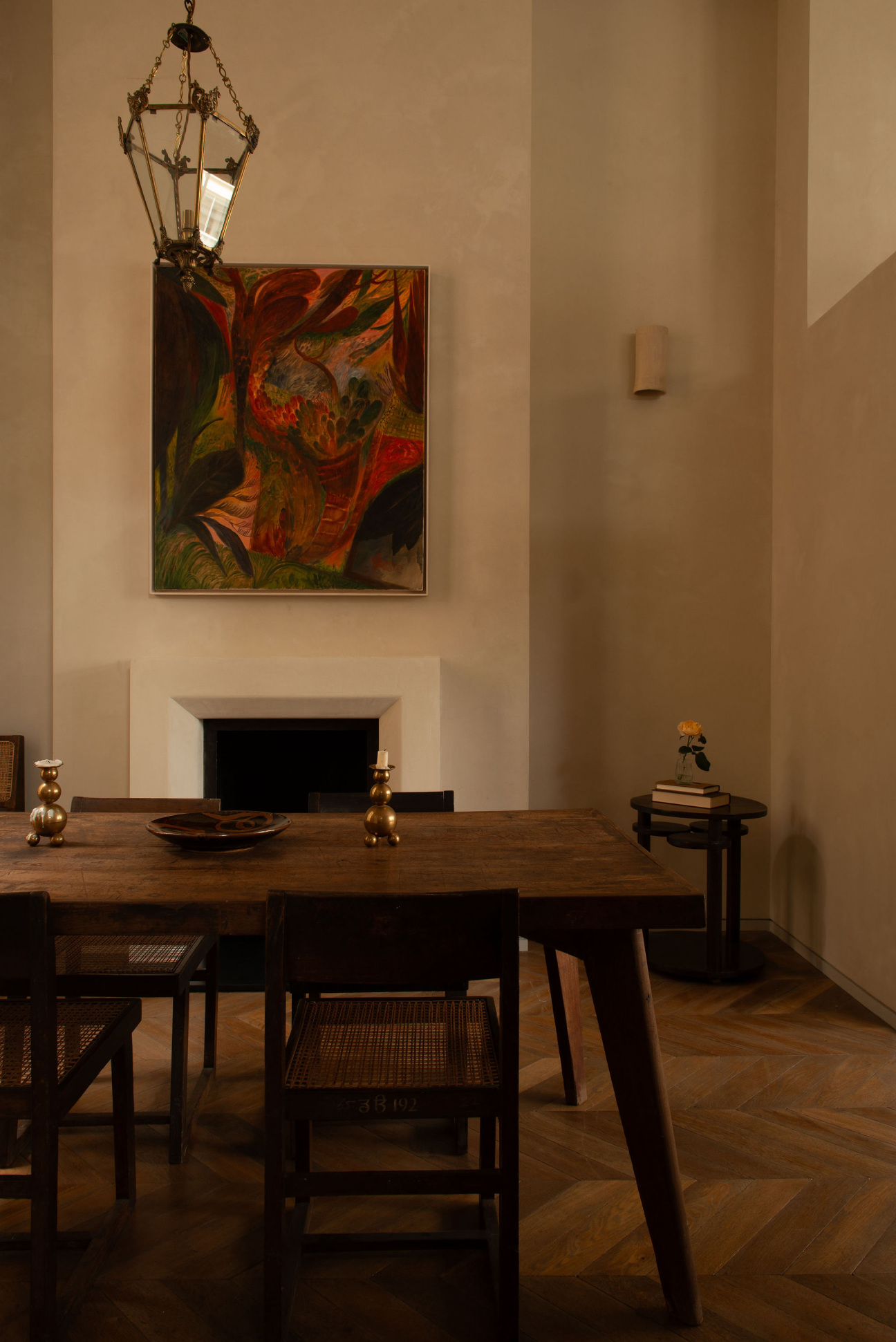
What are the three must-see shows this month?
"Man Ray in Paris" by Larkin Erdmann at a private residence opposite the Louvre, consisting of painting, objects, photography and drawings in Paris. "The Imaginary Institution of India: Art 1975 – 1998" curated by Shanay Jhaveri at the Barbican here in London. "Lights on 212," an exhibition curated by Valerio Polimeno at Galerie Chastel Marechal, bringing together modern design and lighting works by Dan Flavin, Etel Adnan, and Line Vautrin.
Do you collect anything other than art?
I love to travel, so I am collecting experiences. However, collecting books on art, architecture, and design is a growing passion of mine. Both are quite simply the source material for new inspiration leading to further discovery and understanding of the world around me. I am also passionate about Art Deco lighting. Works in my collection feature Boris Lacroix and René Lalique. I complement the vintage lighting with contemporary lighting designs by Apparatus Studio directed by Gabriel Hendifar.
What piece of advice would you give someone who wants to get into collecting?
Follow your curiosity and collect with your heart and eyes. Don't be a collector who collects what you are told is important to collect, as it will invariably lead to dead ends and fads. In this way, you will have a collection that genuinely reflects your point of view and taste.










 in your life?
in your life?

